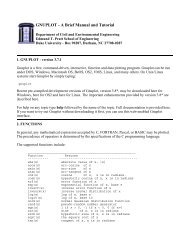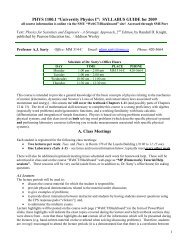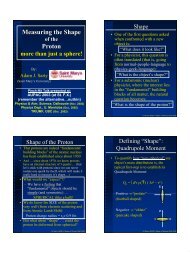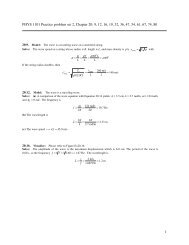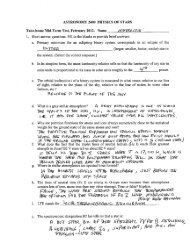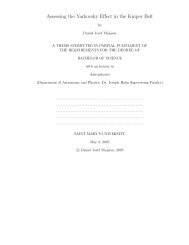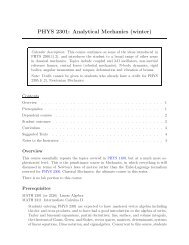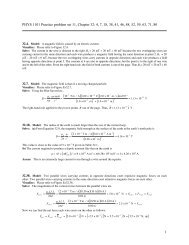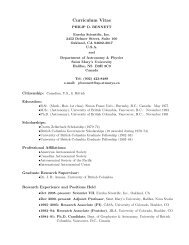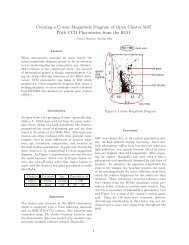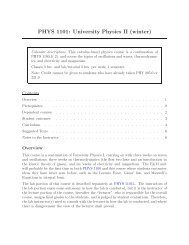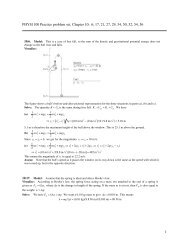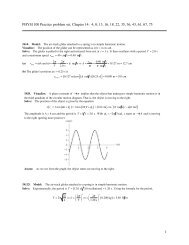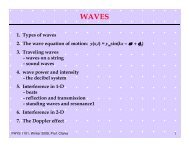Isothermal process on p-V, T-V, and p-T diagrams
Isothermal process on p-V, T-V, and p-T diagrams
Isothermal process on p-V, T-V, and p-T diagrams
You also want an ePaper? Increase the reach of your titles
YUMPU automatically turns print PDFs into web optimized ePapers that Google loves.
T<br />
T H<br />
T C<br />
a<br />
S 1<br />
Maximum efficiency <strong>and</strong> the Carnot cycle<br />
Q in<br />
Q out<br />
c<br />
S 2<br />
S<br />
T<br />
T H<br />
T C<br />
a<br />
d<br />
S 1<br />
Q in<br />
W > 0 W > 0<br />
n<strong>on</strong>-optimal thermo<br />
-dynamical cycle for<br />
an engine<br />
Q out<br />
PHYS 1101, Winter 2009, Prof. Clarke 36<br />
b<br />
c<br />
S 2<br />
S<br />
optimal thermodyn<br />
-amical cycle for an<br />
engine (Carnot cycle)<br />
p<br />
a<br />
S 1<br />
T C<br />
Q in<br />
S 2<br />
d<br />
adiabats<br />
b<br />
isotherms<br />
T H<br />
c<br />
Qout V<br />
the Carnot engine cycle<br />
<strong>on</strong> a p-V diagram<br />
Note that for an engine, the thermodynamical cycle is always clockwise.



